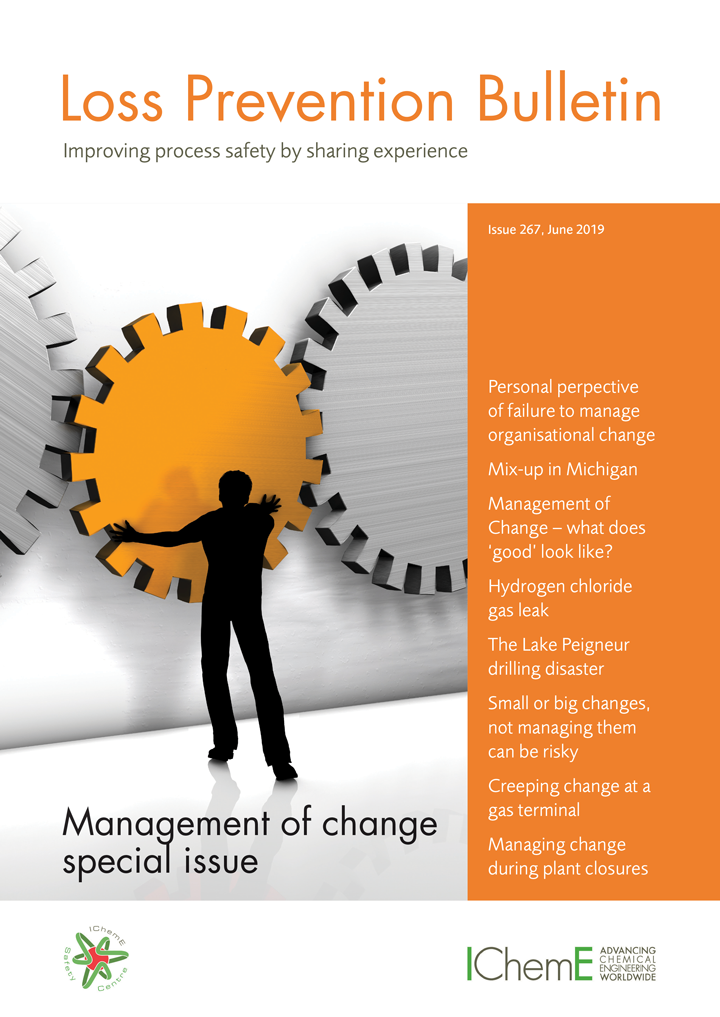Management of Change: Getting it Right
Forty-five years ago this month 28 people died at Flixborough, UK, caused by a disastrously ill-managed change to a process running on site. The change led to the release of ~30 t of boiling cyclohexane, with a subsequent enormous vapour cloud explosion. The site was destroyed and houses were damaged kilometres away.
Since then much has been learned – and written – about how to manage change safely and successfully but the process industries continue to make mistakes, with serious and sometimes fatal consequences. Recognising this continuing problem, this month’s Loss Prevention Bulletin (LPB) has a special issue on management of change.
There are always important lessons to be learned by studying and understanding cases where changes were badly managed. However, this does not necessarily tell us how to manage changes well, to give the right outcome and avoid the pitfalls which are always possible. Helping to answer this question, LPB includes one article trying to answer the question “What does a 'good' management of change (MoC) system look like?” The article is written by Ken Patterson and Gillian Wigham, two safety, health and environment (SHE) system auditors with experience of reviewing systems across the world. They emphasise that they are not claiming that their’s is either the only or the right answer but they do offer key elements they believe a system should contain.

The article discusses what the authors look for in an MoC system, emphasising the importance of the MoC system’s links into the process safety management system (PSMS). Unless process safety is itself well managed by a robust PSMS it will not give the MoC system the robust information it requires for safe assessment. Nor will a poor PSMS ensure the actual change is carried through successfully, with good engineering and effective permits to work, etc. Indeed, the links must extend all the way through to ensuring the change is properly embedded back in the PSMS itself, by updating the P&IDs, the training requirements, and the maintenance schedules for example.
The article emphasises that thorough risk assessment of the proposed change is at the heart of an effective MoC system and that all changes need to be assessed in some way, though good systems will tailor the assessment to the change proposed. “All” is a key word in MoC systems, they need to cover all the types of change which could affect safety – changes to plant, process and people; hardware and software; mechanical and electrical, permanent and temporary. Whatever the change, it needs to be assessed by competent people asking searching questions about the change and its effects, both upstream and downstream, immediate and delayed.
No system is ever perfect and all systems need management assessment to keep them effective, something the article discusses. The article should help those running and managing MoC systems to ask questions about their own systems, and avoid getting it too badly wrong.
Read the full article, free-of-charge, here.
Recent Editions
Catch up on the latest news, views and jobs from The Chemical Engineer. Below are the four latest issues. View a wider selection of the archive from within the Magazine section of this site.




